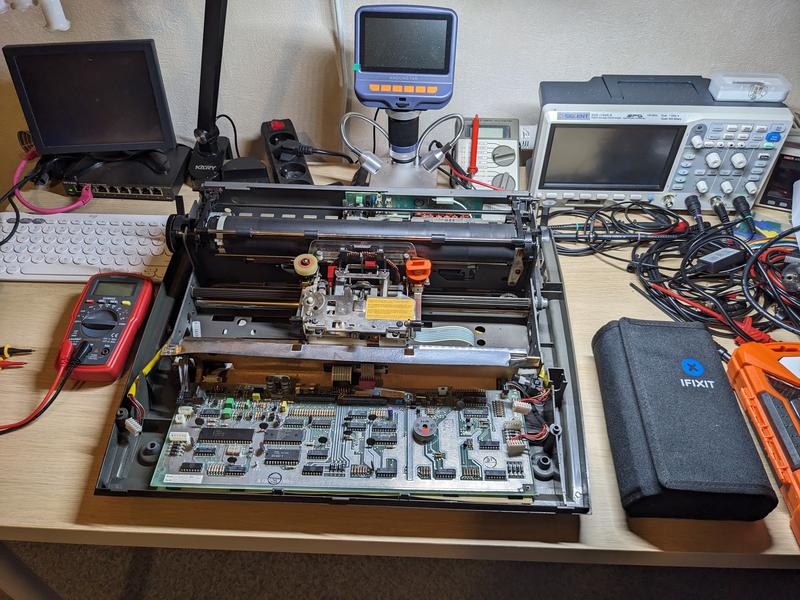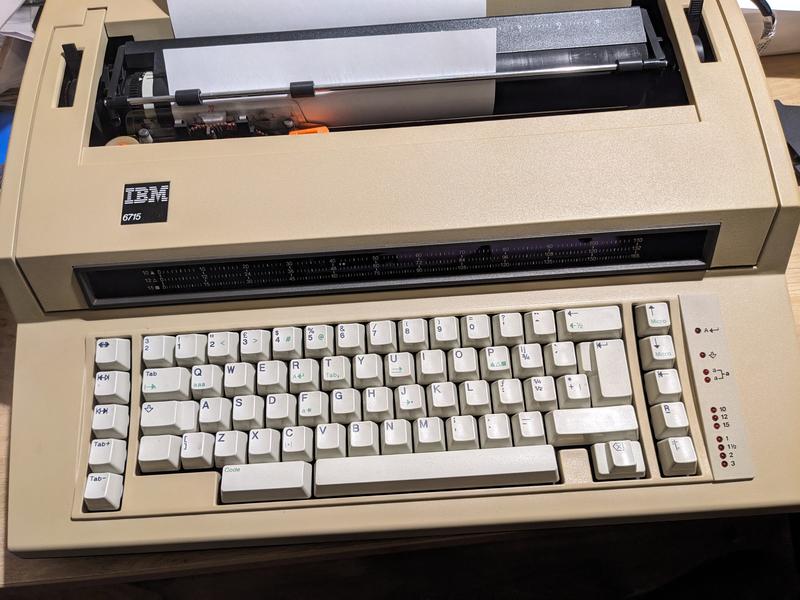Fixing the IBM 6715 Actionwriter 1, Part 2
Continuing work on the IBM 6715 Actionwriter 1.

After I took the dead machine apart, I first checked out the power supply, suspecting a possible blown capacitor.
Well, that wasn't it. The power supply looked perfectly healthy and generated all the expected voltages. So the next thing to check was the main circuit board.
A visual inspection of the board showed nothing obviously wrong. An electrical check of the power inputs showed no short circuits or broken connections. The next step was to gradually plug things back into the main board and see what happens. The first thing that happened when I plugged in just the power connector was a beep. That's a good sign; it means the logic is at least partially working. When I then plugged in the motors, at first nothing happened, until I remembered the cover open switch, which prevents movement when the cover is open. I pushed the button, and the motors went through their power on reset sequence. Good, next step, plug in the keyboard. Well, so long as I kept that cover switch pushed in, everything just worked exactly as it should. I tried several power cycles, just to be sure that it wasn't a one-off fluke. The machine just works perfectly, as if there had never been any problem.
At this point, the most likely explanation is that the cover open switch was dirty and dodgy, and didn't make contact after I had opened the cover to take out the ribbon. I …
more ...